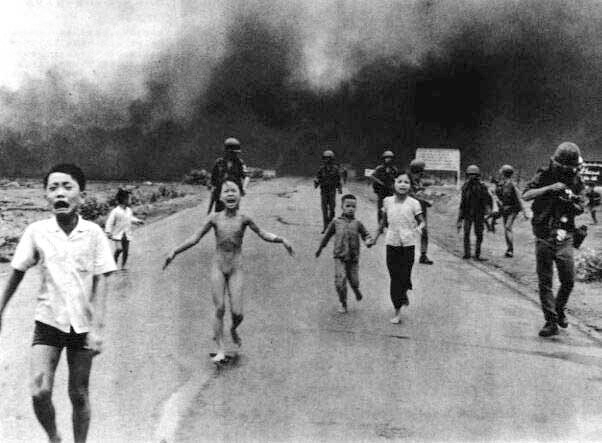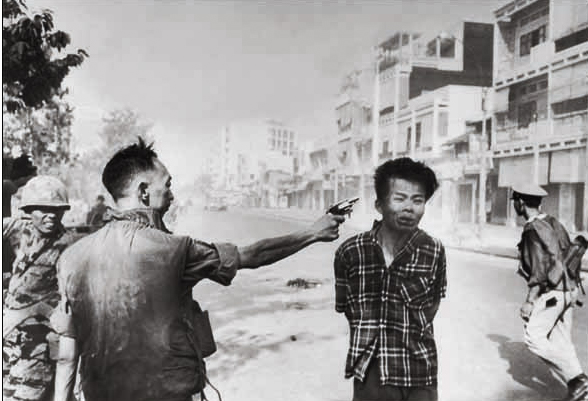Research: Vietnam war photography

The Soviet Union dictator Stalin argued that “One death is a tragedy; a million is a statistic.”(Joseph Stalin) Although I do not agree with the statement or the man, in reality we find that we need to identify with the individual in the suffering before it really hits home. There had already been hundreds of images of the death and destruction come back from the Vietnam conflict, why were Nick Ut’s and Eddie Adam’s images so powerful, so unique? I believe it is because the individual suffering of the Vietcong soldier and the young children from Trang Bang village is something any human or parent could identify with. These images show the worst aspects of war and awaken us to the unbelievable sinful nature of mankind.

Eddie Adams' photo may have been more influential in starting the move towards a public majority set against the occupation of Vietnam. The image depicts the exact moment a bullet entered the skull of the Vietcong prisoner, what it didn't show was the fact that the man had just killed a number of American soldiers. A specific still image is incredibly powerful, especially as it freezes a brief moment, which can easily be taken out of context. In Time magazine July 1998, Eddie Adams wrote; “Still photographs are the most powerful weapon in the world. People believe them; but photographs do lie, even without manipulation. They are only half-truths...” (Eddie Adams, 1998). Adams believed that although the general was the one who had killed the Vietcong soldier, he said that he had killed the general with his camera. The image certainly rallied support for the anti-war movement, but the evidence is not conclusive that the image solely accomplished anything.
Although this area of art or more specifically photography does demonstrate some tangible change in the world. It is not an area I want to concentrate my research on. Due to the content of my Iraq work, it is relevant to look at other wars.